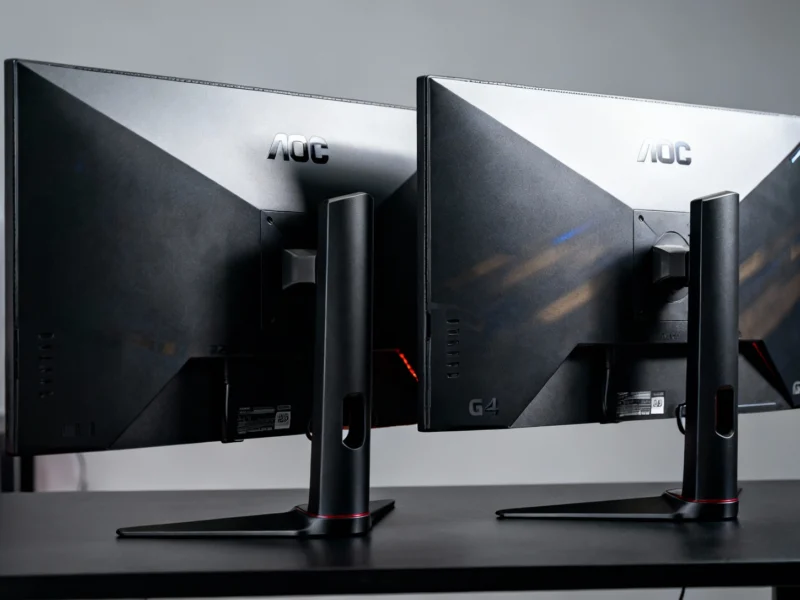AMD is making a strategic entry into the ARM market with its groundbreaking “Sound Wave” APU, marking the company’s first significant foray beyond x86 architecture in over a decade. The custom-built processor, manufactured on TSMC’s advanced 3nm process, represents AMD’s direct challenge to Qualcomm’s dominance in the low-power computing segment. According to customs import records that confirmed the chip’s specifications, Sound Wave features a compact BGA-1074 package measuring 32 mm × 27 mm, positioning it perfectly for next-generation thin and light devices where energy efficiency and AI capabilities are becoming increasingly critical.
AMD Sound Wave Technical Specifications and Design
The newly revealed AMD APU incorporates a sophisticated 2 + 4 hybrid core configuration, combining two performance cores with four efficiency cores to optimize power consumption across varying workloads. This architectural approach, while uncommon in low-power processors, is enhanced by 4 MB of L3 cache and an innovative 16 MB MALL cache derived from AMD’s Infinity Cache technology used in Radeon graphics cards. Industry experts note that this memory hierarchy significantly improves responsiveness and multitasking capabilities within the chip’s constrained 5W to 10W thermal design power envelope.
Graphics performance receives equal attention with the integration of four RDNA 3.5 compute units, delivering capable light gaming support and optimized machine learning acceleration. The processor’s memory subsystem represents another advancement, featuring a 128-bit LPDDR5X-9600 controller and reportedly 16 GB of onboard RAM, aligning with current trends in unified memory architectures common to ARM architecture designs. Additional coverage of similar technological advancements can be found in our analysis of recent chip manufacturing developments.
Manufacturing and Production Timeline
AMD has partnered with TSMC for manufacturing the Sound Wave processor on their cutting-edge 3 nanometer node, representing one of the most advanced production processes available for consumer semiconductors. The chip employs a 0.8 mm pitch and FF5 interface, replacing the FF3 socket previously utilized in Valve’s Steam handheld devices, suggesting broader applications beyond traditional computing platforms. According to recent analysis from industry insiders including @Moore’s Law Is Dead and @KeplerL2, mass production is scheduled for late 2025, with commercial devices expected to reach markets in 2026.
The processor’s physical design reflects careful engineering for mobile applications, with the BGA-1074 package maintaining standard mobile SoC dimensions while accommodating the advanced feature set. This manufacturing approach follows industry trends toward more integrated solutions, as detailed in our coverage of technological economic developments affecting semiconductor production.
Strategic Market Position and Competition
AMD’s re-entry into the ARM space with Sound Wave represents a calculated strategic move to compete directly with Qualcomm’s Snapdragon X Elite in the growing Windows on ARM ecosystem. The company’s previous ARM experimentation through “Project Skybridge” over a decade ago was ultimately abandoned, but current market conditions and technological maturity make this new initiative significantly more viable. According to industry experts note, the timing aligns perfectly with Microsoft’s planned Surface refresh in 2026, suggesting close collaboration between the two companies.
The competitive landscape for central processing units has evolved substantially, with energy efficiency becoming as important as raw performance in many computing segments. AMD’s decision to pursue ARM architecture again reflects the growing stability of Windows on ARM and the increasing importance of AI acceleration in mobile computing. Data from industry reports indicates strong market demand for processors that balance performance with power efficiency, particularly in the premium thin-and-light device category where Sound Wave appears targeted.
AI Capabilities and Real-World Applications
Sound Wave incorporates AMD’s fourth-generation AI engine, enabling advanced on-device inference tasks without relying on cloud connectivity. This dedicated AI acceleration enhances efficiency for workloads including:
- Real-time speech recognition and translation
- Image analysis and computer vision applications
- Adaptive power management based on usage patterns
- Background task optimization for extended battery life
The integration of specialized AI hardware represents AMD’s commitment to competing in the modern computing landscape where artificial intelligence capabilities are becoming standard expectations rather than premium features. This approach mirrors industry-wide trends toward heterogeneous computing architectures that optimize different types of workloads across specialized processing units.
Industry Impact and Future Implications
AMD’s Sound Wave initiative signals a significant shift in the company’s strategic direction and could potentially reshape the competitive dynamics of the mobile computing market. By leveraging its expertise in graphics technology through RDNA 3.5 and cache innovations from its GPU division, AMD brings unique capabilities to the ARM ecosystem that differentiate its offering from established competitors. The company’s extensive experience in high-performance computing, combined with TSMC’s manufacturing excellence, creates a formidable foundation for challenging the current market leadership.
As the 2025 production timeline approaches, industry observers will monitor how AMD’s entry affects pricing, innovation pace, and feature development across the mobile processor segment. The success of Sound Wave could encourage further architectural diversification within AMD’s product portfolio and potentially influence how other traditional x86 manufacturers approach the ARM market. With multiple technological transitions converging—including advanced process nodes, AI integration, and architectural heterogeneity—AMD’s timing positions the company at the forefront of several key industry trends simultaneously.



